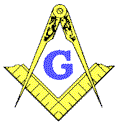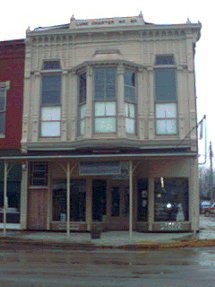 |
|
|
![]() By-Law
approved
By-Law
approved
![]() Sample
of printing of by laws word.doc (save to disk first, them open)
Sample
of printing of by laws word.doc (save to disk first, them open)
![]() Sample
of printing of by laws (pdf) - not right yet
Sample
of printing of by laws (pdf) - not right yet
![]() Our
events are listed here
Our
events are listed here
![]() Western
Area info. page
Western
Area info. page
![]() Who
to call For Funeral
Who
to call For Funeral
![]() Local
Weather
Local
Weather
![]() Lodges
of Fulton County
Lodges
of Fulton County
![]() Call
List
Call
List
![]() Astoria
Area Chamber Commerce
Astoria
Area Chamber Commerce
![]()
![]() Ice
Cream Cleaning Procedure
Ice
Cream Cleaning Procedure
&
Operations
![]() Pictures
of Vermont Lodge inside
Pictures
of Vermont Lodge inside

Vermont Lodge 116
Located on Main Street, in Vermont, IL
Stated meeting nights are 1st Thursdays of each month, at 7:30pm.
Astoria Masonic Lodge No. 100 & Tablegrove Masonic Lodge No. 939 have consolidated with Vermont Lodge No. 116
Vermont Masonry was first organized in 1852. Masons met in several different buildings prior to 1891, when it began construction of it's present lodge hall; which is perhaps the most elaborately decorated rural fraternal hall in the state of Illinois.
The lodge contracted with Edmond Nelson, who was then about to have his own building erected for a hardware store, to build the second and third stories in exchange for a long term lease with provisions of separate maintenance for specified areas. The arrangement continues to the present with Vermont Hardware a continuation of the original Nelson store.
Providing for the ability of the members to accommodate the total fraternal lodge concept necessitated a suite of rooms being fitted for the various lodge activities and occasional public events. The Vermont Masonic Hall was designed with a well appointed anteroom, off of which was the main lodge room to the east and a dining and social room to the west. A broad open staircase accessed the balcony above with an open railing to the dining room and a long viewing window overlooking the main lodge room. This allowed for additional viewing of certain lodge events and also funerals by the public. The east chamber remains as decorated originally -- the walls entirely panelled and the ceiling coffered in fabricated, pressed sheet metal, worked in designs that effected an interior space, reminiscent of Renaissance Italy. Metallic gilding accents the elaborate design. Original furnishings and carpeting are complete to the scene.
In 1989, the Vermont Masonic Hall was placed on the National
Registry of Historical Landmarks.
|
|
For additional information or a tour. Please call one of the officers or write to Harold McCurdy at RR1, Vermont, IL 61484 the lodge Secretary.
E-mail any information or comments to The Web Keeper:
Wor.
Bro. Geoffrey Lynn Lasswell
Comments and opinions expressed on these pages do not
necessarily reflect the
"official" policies of the Grand Lodge of Illinois.
It is not the primary function of masonry to initiate candidates, or to enlarge its membership. Were it so, there would be no basis for our laws against proselytizing. The ordinary function of a Masonic Lodge indeed, the primary function of our Craft, is to train its members to an understanding of the truths which its ritual and its ceremonies are calculated to inculcate, to develop its members as benevolent men, to cultivate the social virtues among men, and to propagate the knowledge of the art.
The chief concern of the Lodge is with its welfare, the happiness, and
the Masonic development of its members, not with the admission of those
who seek entrance to its doors. Its success as a Masonic Lodge cannot be
gauged by the length of its
membership roll or by the size of its accumulated funds.
The beauty of our ritual, and the good fellowship among the members
of our Lodges cannot be conserved when the chief aim is to make Masons
and money- "For a mans life consisteth not in the abundance of things which
he possesseth"- and a Lodges
life does not consist in its acquisitions, but in the contributions
which it makes to civilization and society through the influence to those
whom it has helped to train to what we call Masonic character. Therefore,
it should be the duty of every Masonic Lodge to put in action a plan for
the education of its members in Masonic history, symbolism and philosophy,
devoting more of its meetings to this much neglected function
Reprinted from the Dec. 2001 issue of "Masonry in Manitoba".